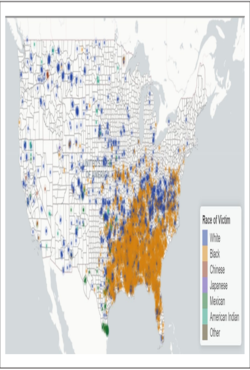National Crimes: A New National Data Set of Lynchings in the United States, 1883 to 1941
By Charles Seguin and David Rigby
Historians are increasingly studying lynching outside of the American Southeast, but sociologists have been slow to follow. We introduce a new public data set that extends existing data on lynching victims to cover the contiguous United States from 1883 to 1941. These data confirm that lynching was a heterogeneous practice across the United States. We differentiate between three different regimes over this period: a Wild West regime, characterized mostly by the lynching of whites in areas with weak state penetration; a slavery regime, found in former slave states, characterized mostly by the lynching of blacks; and a third minor regime, characterized by the lynching of Mexican nationals mostly along the Texas-Mexico border. We also note great variability at the county level in the extent of lynching. By contrast, we find very little state-level variability in lynching once local and regional regimes are considered. We discuss the implications of local and regional heterogeneity for quantitative lynching research using these data.
SociusVolume 5, January-December 2019


